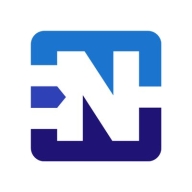


Find out what your peers are saying about Netgate, Fortinet, OPNsense and others in Firewalls.
Clients are now comfortable and not wasting productive hours on IT support.
We have experienced a positive return on investment by utilizing Fortinet's products.
There's definitely an ROI. Having a centralized way of managing and applying policies across the entire organization always helps.
If they can save their data from attackers then it would save them at least two days of not working plus the cost of recovery, which would be much more than the cost of the system and maintenance.
Since the memory leak fixes, it's been incredibly stable and requires minimal maintenance.
In four years of using it, that payment of 189 dollars per year has already paid off.
The service generates a low rate of false positives, reducing the overhead of managing false positive events.
He explained that it required a command line configuration, as it couldn't be done through the graphical user interface.
I would rate their support for FortiGate a nine out of ten.
They offer very accurate solutions.
When I provide detailed information about the problem, they've been able to reply quickly with a solution or go research the problem and get back to us quickly with a fix.
They are highly responsive.
I couldn't imagine having better support.
There is a lack of SLA adherence, and third-party partners do not provide prompt responses.
The service response times are aligned with standards, responding within a few hours based on the problem's criticality.
They scale up really well from smaller models like the FortiGate 40 and 50 to bigger sites with the FortiGate 100 for more throughput - up to enterprise datacenters.
The variation comes in terms of the interfaces and throughputs, but from a security perspective, you get the same benefit, irrespective of whether you have an entry-level unit or an enterprise.
You can choose a cheaper model if you only have 20-30 users, but you will need to spend more money for a FortiGate solution that covers 5,000.
If I put things into a certain context and say that we have a network that has around 100 people, then you don't put up a device that can manage 100 people. Instead, you need to get a device that can manage 150 to 200 people, and then you can create room for growth.
I don't think Netgate pfSense can offer much scalability for big enterprises.
Even with a jump from a 50 megabit to a 500 megabit internet connection and approximately 65 active VPN clients, our firewall operates smoothly without any strain.
Wildfire is highly scalable.
Improper handling of these can lead to a memory surge, a well-known bug that can cause the entire system to freeze.
It is less stable than Palo Alto Networks and Check Point firewalls because there are lots of bugs in the latest firmware.
We have not had any problems with the operating systems or maintenance of subscriptions.
I rate the solution's stability a ten out of ten.
I've noticed a substantial improvement in stability and ease of use for upgrades and patching over the past year or two.
When I replace consumer routers with pfSense for small businesses with two or three employees, they are often amazed to discover the router can run for a year without a reboot.
If I have put 10 GBPS of throughput on a firewall and I enable all of these features available, such as IPS or UTM functionalities, the throughput comes down to 1 GBPS.
By providing an integrated solution, users would have access to all features and functionalities within a single window, eliminating the need to navigate through multiple windows.
Investing in a solution that can accommodate such growth would be more cost-effective than repeatedly purchasing new hardware.
There is some trade-off between having a certain level of security and maintaining acceptable performance.
If I need to go between different VLANs, I have VLAN 19.1 and VLAN 19.2, and I strictly use Netgate pfSense, but it doesn't route very efficiently and works quite slowly.
They should support the idea of configuration management as code from source code and provide a more robust API for managing the pfSense configuration.
The dashboard should provide better visibility, especially in showing how many files are sent to Wildfire and their findings.
Secure SD-WAN is free of charge.
The most expensive part is the renewal of the license subscription.
FortiGate is priced lower than Palo Alto.
The price of setup is approximately €500 to €800, which also includes the initial monitoring.
You can acquire a decent embedded PC for around a hundred dollars and install pfSense on it, effectively creating a robust firewall solution.
The product is free of cost.
I would rate it an eight out of ten in terms of affordability.
The firewall, IPS, and VPN functions are the most valuable features.
FortiGate provides solid protection against viruses, malware, and other threats.
Within the same dashboard, you get to see the security profiles, the type of traffic that's passing through, the top applications that are being consumed, etc.
With pfSense, network configurations adhere to standard practices, facilitating troubleshooting without the need for complex overlays or policies.
The price point is the most valuable aspect of the solution.
I like the tool's flexibility in the sense that you do not have to buy an appliance. You can put it on your own hardware, and it can be very simplistic hardware with simple configurations.
The most valuable feature of Wildfire is its sandboxing capability for examining suspicious files or locations.



Fortinet FortiGate offers comprehensive network security and firewall protection across multiple locations. It effectively manages data traffic and secures environments with features like VPN, intrusion prevention, and UTM controls.
Organizations rely on Fortinet FortiGate for its robust integration with advanced security policies, ensuring significant protection for enterprises, cloud environments, and educational sectors. It facilitates network segmentation, application-level security, and authentication management, securing communication within and between locations such as branches and data centers. Its efficient SD-WAN and UTM features enable streamlined data management and enhanced threat protection capabilities. Users appreciate its centralized management, facilitating seamless operations across diverse environments.
What are the key features of Fortinet FortiGate?
What benefits should users expect from Fortinet FortiGate?
Fortinet FortiGate is crucial in sectors like education, offering robust networks for secure data flow between campuses and facilitating remote learning. In enterprise environments, it allows efficient management of application traffic and security across multiple branches, while in the cloud, it seamlessly integrates with diverse platforms to enhance security infrastructure.
Netgate pfSense is widely leveraged by organizations for its comprehensive capabilities in firewalls, VPN servers, and bandwidth management. It suits LAN, WAN, and DMZ networks, offering secure, scalable, and efficient networking solutions.
Netgate pfSense stands out in diverse environments with its enterprise-grade features and cost-effective operations compared to competitors like Cisco. Deployed as an edge device, it optimizes routing, ad-blocking, content filtering, and traffic shaping. Users benefit from its versatile configurations, robust firewall protection, VPN functionality, and ISP load balancing. The open-source nature allows for extensive customization, integrating plugins like Snort and pfBlockerNG, and compatibility with third-party tools enhances its utility. The intuitive GUI combined with detailed logging and centralized management fortifies network security.
What features define Netgate pfSense?
What benefits should be considered for ROI?
Organizations in industries such as finance, healthcare, and education find Netgate pfSense integral due to its advanced security features and cost benefits. Its scalable architecture and strong VPN support are crucial for industries requiring stringent data protection and reliable remote access. The adaptability of pfSense makes it suitable for dynamic environments seeking comprehensive, secure networking solutions.
Palo Alto Networks WildFire is a highly effective cloud-based advanced threat protection (ATP) solution that organizations in a wide variety of fields trust to help them keep safe from digital threats. It is designed to enable businesses to confront even the most evasive threats and resolve them. It combines many techniques to maximize the level of threat protection available to users.
Palo Alto Networks WildFire Benefits
Some of the ways that organizations can benefit by choosing to deploy WildFire include:
Proactive real-time threat prevention. Organizations that utilize WildFire can take a proactive approach to their network security. Wildfire’s security scanning software is supported by powerful automation that enables it to run 180 times faster than other similar solutions. It also leverages machine learning to spot and address two times more malware monthly than its competitors. Users can solve issues as they arise, which prevents them from suffering severe harm.
A holistic approach to security. WildFire leverages many of the security features and characteristics that can be found in some of the most effective security solutions in a way that provides users with a powerful protective blanket. It combines such things as machine learning, dynamic and static analysis, and a custom-built analysis environment, and enables users to cover many different potential avenues of attack. In this way, organizations can easily detect and prevent even the most sophisticated threats from harming them.
Reduce overhead costs. Using WildFire cuts the expenses that a business incurs. Its architecture is based in the cloud and, as a result, users do not have to purchase hardware to run it. Additionally, those users do not have to pay anything more than a product subscription fee. They can scale it up as they wish and incur no additional costs.
Palo Alto Networks WildFire Features
Some of the many features WildFire offers include:
Third-party integrations. WildFire gives users access to integrations that can enable them to combine Wildfire’s security suite with outside tools. If an organization thinks that they are missing something, they can easily use Wildfire’s third-party integrations to bolster their capabilities. These integrations can connect to many different types of tools, like security information or event management systems.
URL filtering. Organizations can use a URL filtering feature to safeguard themselves against known threats. When this feature is active, it will scan for traffic coming from specific URLs that are known to be malicious. This keeps them one step ahead of those threats that they know about.
Deep analytics. Wildfire comes with the ability to provide users with a detailed analysis of any threat that it finds across all of their network environments. It gives users insight into everything from their natures to the actions that they have performed.
Reviews from Real Users
WildFire is a solution that stands out when compared to its primary competitors. Two major advantages that it offers are the high speeds at which it can analyze network traffic for threats and the accuracy with which it can pick out genuine threats from false positives.
Ahmad Z., the principal consultant at Securelytics, writes, “The analysis is very fast. The intermittent is a millisecond and has a speedy response time.”
Christopher B., the senior systems administrator at a government agency, says, “It gives a more accurate assessment of a virus in terms of whether it's truly a virus, malware, or a false positive. We have some legacy software that could pop up as being something that is malware. WildFire goes through and inspects it, and then it comes back and lets us know if it's a false positive. Usually, when it finds out that it's not a virus, it lets us know that it's benign, and it can exclude it from that scan, which means I don't even have to worry about that one popping up anymore.”
We monitor all Firewalls reviews to prevent fraudulent reviews and keep review quality high. We do not post reviews by company employees or direct competitors. We validate each review for authenticity via cross-reference with LinkedIn, and personal follow-up with the reviewer when necessary.